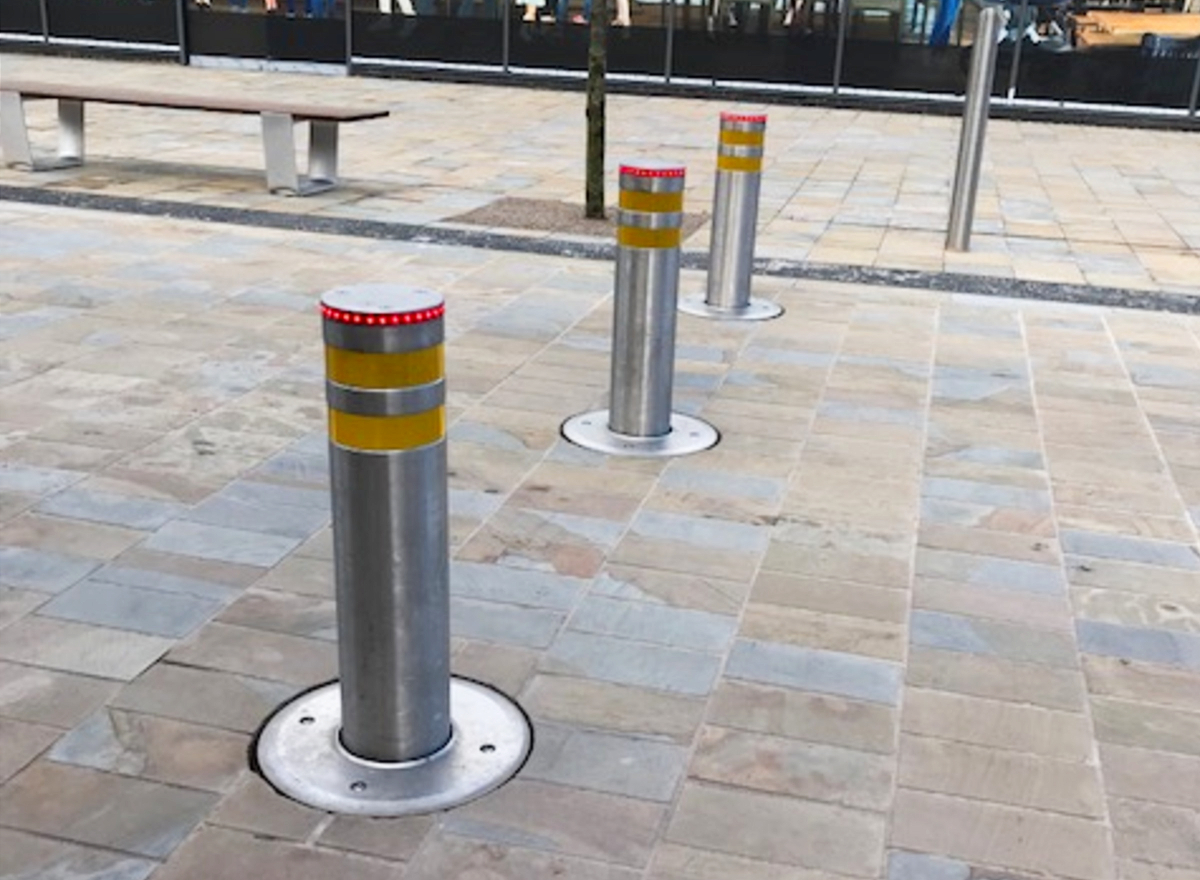Perimeter Security: Why, How, and What? Below, we have outlined how to achieve the best possible protection through understanding standards, threats, risks, analyses, and products.
In the Danish Security and Intelligence Service’s (PET) Assessment of the Terrorism in Denmark, it is stated that the most serious threat is posed by simple attacks, which are “easy” to plan and execute. At the same time, it is emphasized that the threat is serious concerning people gathered in larger assemblies and in relation to our infrastructure. This is the second-highest threat level on the scale!
How do authorities, municipalities, and event organizers respond to this assessment?
Everyone reacts practically to this assessment published by PET, but not particularly wisely at the moment. The police do what they must/can and set requirements for authorities, municipalities, and event organizers to secure their perimeters.
The starting point is a message from the police that it is an unconditional requirement for receiving a permit that “speed-reducing measures” are set up to protect the people within the perimeter.
Currently, the interpretation of this requirement varies greatly among authorities, consultants, municipalities, and event organizers. This often results in the perimeter system/barrier system chosen not providing the security and protection recommended by PET.
Why aren’t the Police’s requirements more specific?
It is not the task of the Police in Denmark to specify how individuals should implement security in practice. That responsibility lies with the individual municipality, authority, or event organizer. If it is not done correctly, the responsibility lies with the one who sets up a security that doesn’t work.
This means that if, for example, a truck is placed across or concrete blocks are placed within the perimeter, and it turns out not to be sufficient, one assumes responsibility and can legally be punished for not implementing the security as it should. Furthermore, it opens up opportunities for numerous lawsuits from the individuals who are injured.
Lastly, one can ask oneself if one’s “brand” as a responsible authority/municipality/event organizer can withstand it becoming common knowledge that one has not done what is necessary when it is possible.
What should one do?
In connection with other forms of security and protection tasks, where, for example, there is a requirement for bullet-resistant measures, a technical and overall assessment of the declared threat is initiated. You evaluate what types of weapons are expected to be used and then specify the level of bullet resistance you want delivered/set up – for example: FB6. This is a standard/norm well-known to manufacturers, and FB6 certifications of products are widely available.
According to international standards for perimeter protection against vehicle attacks (HVM – Hostile Vehicle Mitigation), the same process should be applied.
When the Police demand speed-reducing measures, they have responded progressively to PET VTD. The task of authorities, municipalities, consultants, and event organizers now is to translate this overarching threat into a technical threat in relation to the specific needs of the situation.
In this case, a technical threat should be defined by a site visit where perimeter security is to be set up, a vehicle speed and access road analysis (where the maximum speeds upon encountering the perimeter are calculated), and the coherence with the various needs of the actors is included. The perimeter security solution thus becomes a holistic solution that ensures/protects guests, visitors, or citizens while also meeting the needs of the actors.
There are several products on the market that are tested AND certified as HVM solutions. What does that mean?
It means that the products have been tested by an independent institute, independent of the manufacturer, and tested against the international standards applicable in the field.
ASTM is the American standard, and the test/certification is good, but one must be aware that American types of vehicles are tested, not European types. This means a lot in terms of weight, dimensions, and speeds for these vehicles. Ultimately, it also affects the design of the solutions, which will often be larger (height/width/diameters) and heavier. In Europe, we should stick to European standards and certifications.
PAS 68 is the English standard, and the test/certification is specially designed to meet the requirements of authorities in England. In addition to requirements for the strength of the solutions, systems tested according to PAS68 also deliver a certified level of protection. This means that you actually get a distance behind the system to which the vehicle penetrates. Ex.: PAS68 v/7500(N3C)/80/90/1.9. The last number is the number of meters the measuring point on the vehicle penetrated through the system before it was brought to a stop during testing. The other numbers denote the name of the standard, the vehicle’s impact weight (7500 kg), the vehicle type (N3C=18000 kg – 2 axle/rigid frame), the speed (80), and the attack angle (90).
IWA 14 is the European standard and is essentially an offshoot of the English PAS68 standard. When you look at the certifications, they look like this, for example: IWA14 v/7200(N3C)/80/90/1.9. The composition of the numbers is the same as for PAS68.
Many now wonder: But there are many vehicles, especially trucks, that weigh more than 7200 kg/18000 kg, so what do we do?
Correct, there are indeed many trucks that weigh more, but then it is correspondingly more difficult to achieve higher speeds over shorter distances, and the tested and certified systems will still provide protection. However, the level of protection becomes lower = the penetration becomes deeper/longer behind the system. Here, the threat assessment and speed analyses become crucial, as they determine where and how the systems should be set up to provide maximum protection under the given conditions and with the current threat.
The next thing to consider in your choice of solution is the system’s ability to withstand pushing. Pushing a system away at low speed and then gaining speed are methods that the systems also need to withstand. A new part of the standards is on the way regarding this topic, and many systems are being tested and certified for this type of attack.
But concrete blocks, excavators, trucks, mobile fences, containers, and heavy planters are also speed-reducing measures! Why aren’t they good enough?
Yes, these measures are good enough to reduce speeds, but when it comes to speed-reducing measures for security/protection in relation to the threat described in PET VTD, they are not good enough.
Are, for example, ordinary heavy planters tested to withstand the threat described? No.
Are different types and designs of concrete blocks tested and certified to counter the threat? No.
And so one can continue to analyze all the practical measures that are attempted/seen used, either based on ignorance, thoughts of economy, or simply using what one has available.
Fixed or temporary solutions?
A combination of fixed, automatic, and temporary solutions is the way forward in the long run, but if there is an acute need, it can be solved with temporary surface-laid systems that do not need to be anchored in the ground (of course, it must be documented that the systems are certified and tested without anchoring in the ground).
Menu for establishing perimeter/barrier security systems:
1. Risk management, including determining the threat, vulnerabilities at the location, and consequence analysis.
2. Evaluation of needs.
3. Speed analysis on-site.
4. Look in the market for certified HVM solutions.
REMEMBER! One solution/one product rarely meets all the requirements for perimeter protection!
Damasec Physical Protection Systems is a leader in the market when it comes to solutions with certified, thoroughly tested, fixed, automatic, and temporary surface-laid perimeter/barrier security systems.
If this has raised any questions, you are welcome to contact us.


